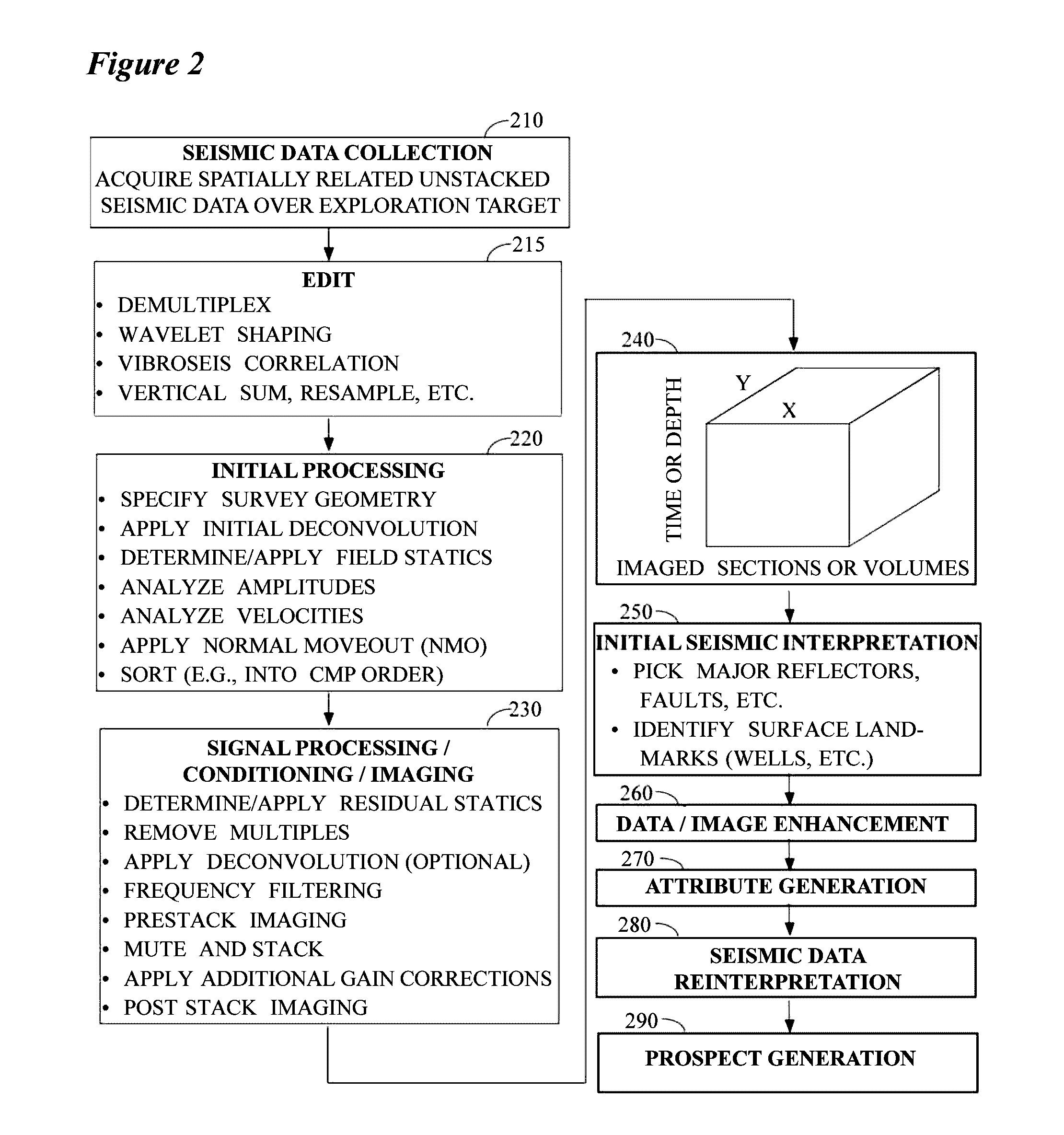System and method for seismic adaptive optics
a technology of adaptive optics and seismic data, applied in the field of seismic exploration and surveillance, can solve the problems of likely velocity errors in the vicinity of the current datum, migrated seismic data that does not accurately reflect, and parts of the subsurface image appearing to be disrupted
- Summary
- Abstract
- Description
- Claims
- Application Information
AI Technical Summary
Benefits of technology
Problems solved by technology
Method used
Image
Examples
embodiment 300
[0031]Turning next to a more detailed discussion, as is generally indicated in the embodiment 300 of FIG. 3, an initial step would be to pick or otherwise select a target interface (box 305). In some embodiments this will be the top of the rock unit that appears to have an anomalous velocity. Note that this initial pick may need to be adjusted in a subsequent iteration (discussed below), but it would be useful to have the pick be as accurate as possible from the outset. Additionally, in some instances the target interface may be discontinuous laterally and / or include some amount of dip and curvature.
[0032]In most cases the target interface will be a 3D surface that is proximate to an interface in the subsurface where there is a substantial change in velocity. As an example, the target interface might be proximate to the top of a salt body, near a magmatic intrusion, etc. In some cases the target interface might be picked along a 2D line but in most cases of interest it will be a 3D ...
embodiment 500
[0050]Those of ordinary skill in the art will also appreciate that there are alternative methods of performing boxes 340 and 345. In an embodiment 500 shown in FIG. 5, estimating time shifts 340 and calculating statics 345 may be performed by a method that first estimates a smooth downward-continued wavefield and then calculates statics by comparing the original with the smooth downward-continued wavefield. The smooth downward-continued wavefield could be calculated in many different ways, but one embodiment begins with a zeroed buffer (box 505) and successively increments it according to boxes 510 through 530. More particularly, in an initialization (box 505) the downward-continued wavefield is organized into a format suitable for further processing from the assembled downward-continued traces 335, and the smooth wavefield is initialized to all zeroes. Next, a residual wavefield is calculated 510 by subtracting the current smooth wavefield from the downward-continued wavefield. Nex...
PUM
 Login to View More
Login to View More Abstract
Description
Claims
Application Information
 Login to View More
Login to View More - R&D
- Intellectual Property
- Life Sciences
- Materials
- Tech Scout
- Unparalleled Data Quality
- Higher Quality Content
- 60% Fewer Hallucinations
Browse by: Latest US Patents, China's latest patents, Technical Efficacy Thesaurus, Application Domain, Technology Topic, Popular Technical Reports.
© 2025 PatSnap. All rights reserved.Legal|Privacy policy|Modern Slavery Act Transparency Statement|Sitemap|About US| Contact US: help@patsnap.com



